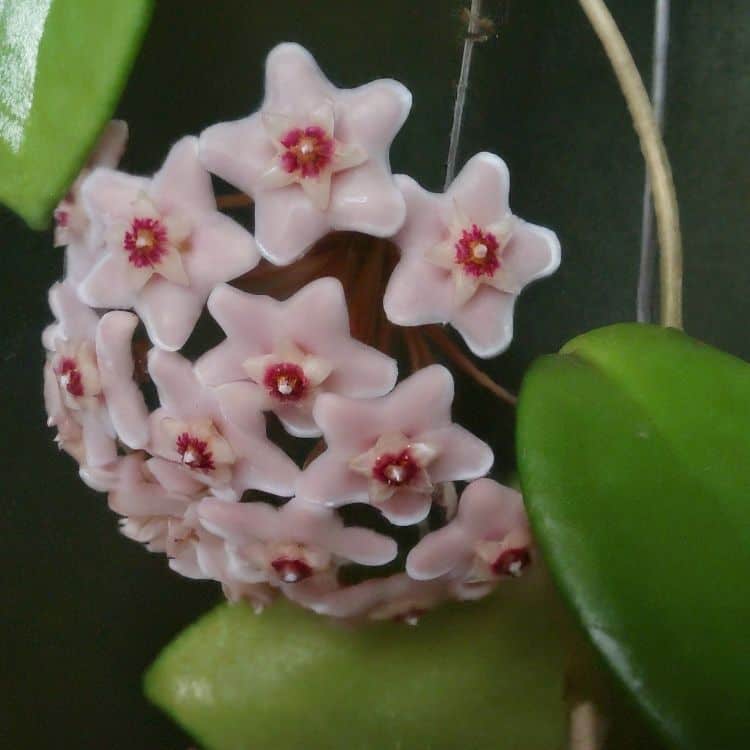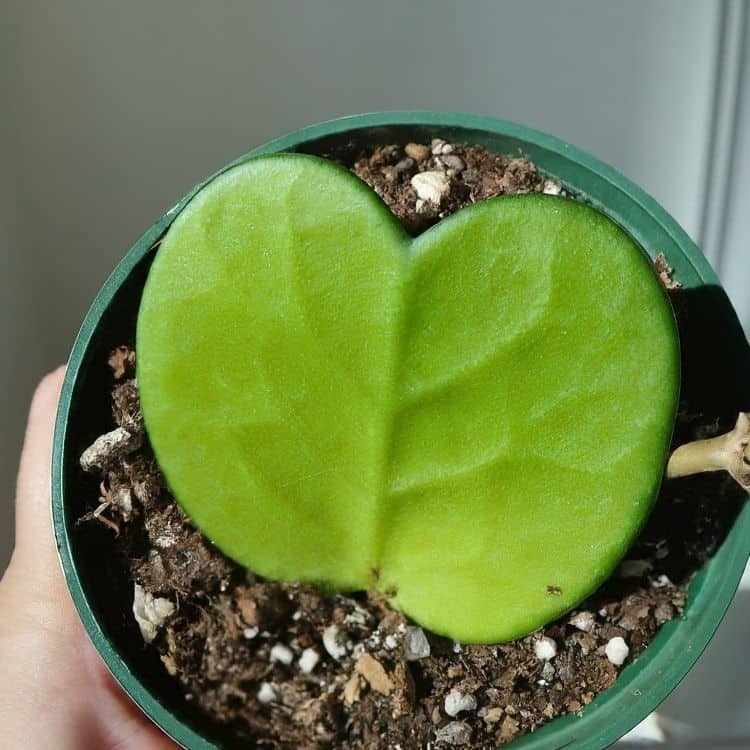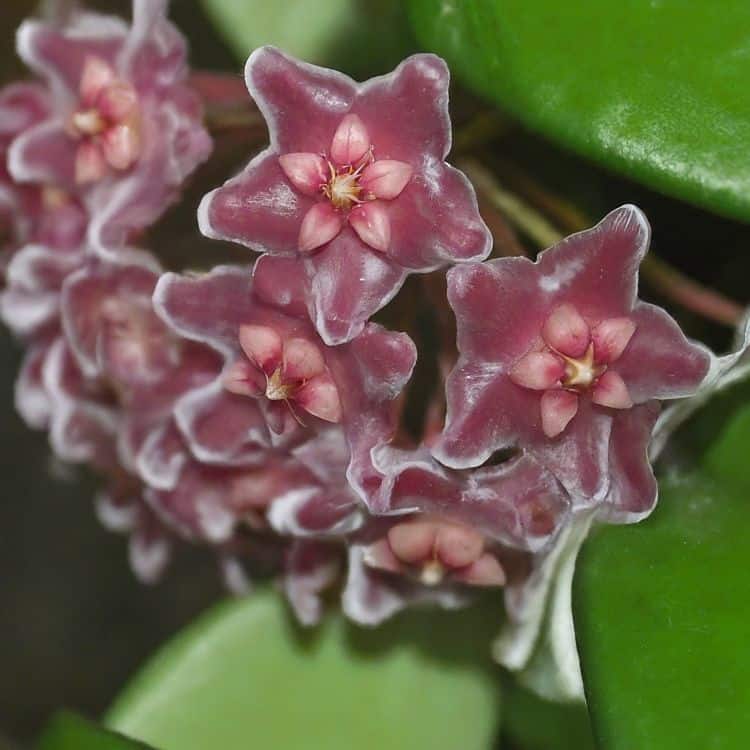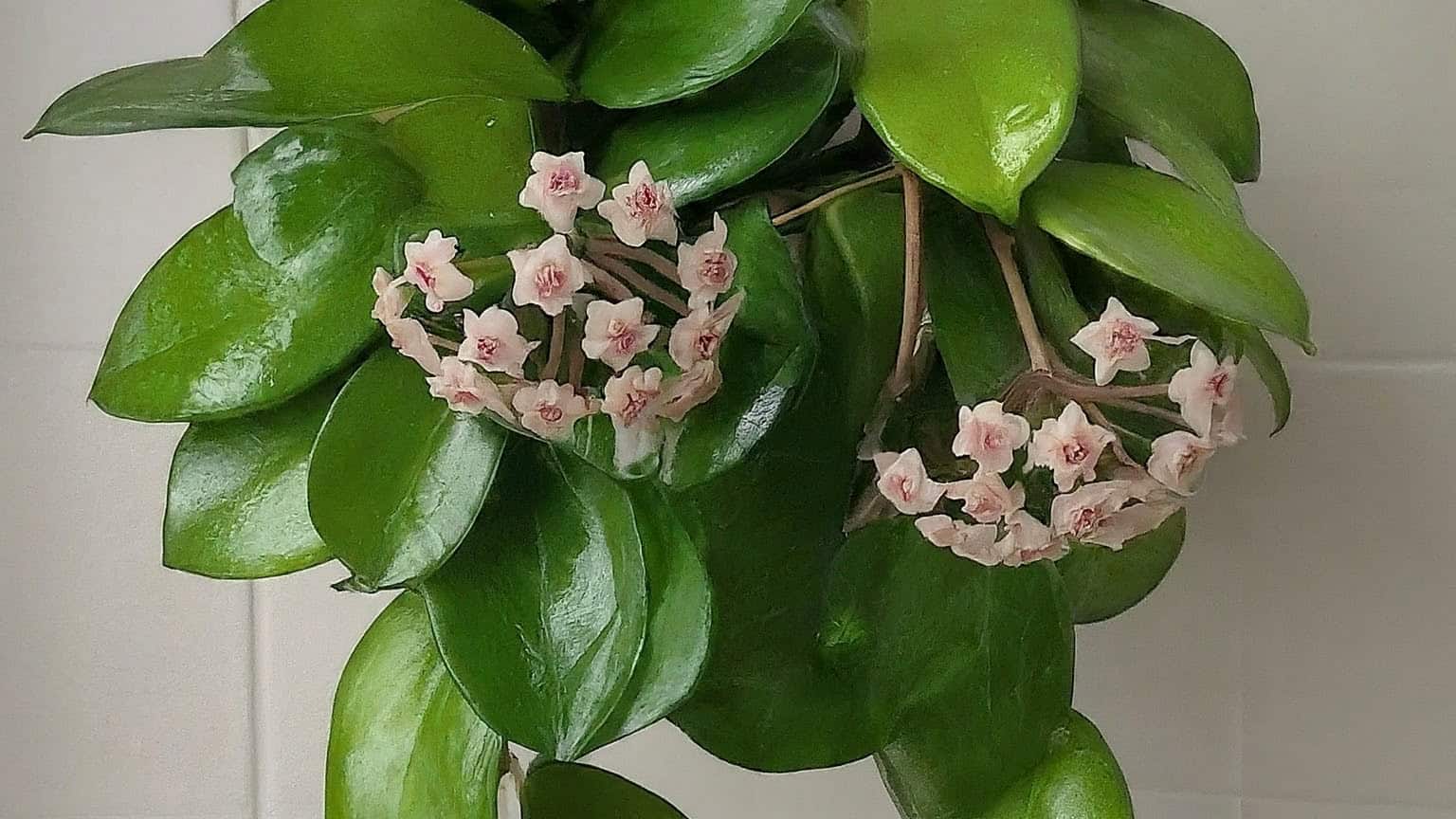Hoya plants, also known as waxy plants or porcelain flowers, are cherished by plant enthusiasts for their exquisite beauty and low maintenance requirements. Belonging with the Apocynaceae, homegrown tropical plants are in Asia, Australia, and Polynesia. With their waxy, often fragrant flowers and thick, succulent-like leaves, hoyas have gained popularity as both indoor and outdoor ornamental plants.
There are different types of hoya plants as well as found in a variety of colors. While the most common colors for Hoya flowers are white, pink, and red, there are also variations in shades and combinations within these colors. Some species may produce pure white flowers, while others may have pink or red hues with white accents. Additionally, the color of Hoya flowers can sometimes change as they mature or in response to environmental conditions such as light intensity or temperature.
Contents
Types of Hoya Plants
Let’s explore the fascinating types of Hoya plants and their unique characteristics.
Hoya Carnosa

Hoya carnosa, is perhaps the most well-known and widely cultivated type of Hoya plant. It features glossy, elliptical leaves and produces clusters of star-like flowers that range in color from white to pink. This species is loved for its resilience and ability to thrive in a variety of conditions.
Hoya Kerrii

Commonly known as the sweetheart or Valentine plant, Hoya kerrii is cherished for its heart-shaped leaves. This species is often given as a gift to symbolize love and affection. While it may not produce as many flowers as other hoyas, its unique foliage makes it a popular choice among different types of hoya plants for plant collectors.
Hoya Pubicalyx

Hoya pubicalyx is known for its striking foliage and abundant blooms. It features lance-shaped leaves with prominent veining and produced clusters of fragrant flowers ranging in color range from deep purple to pink. This species is a favorite among other types of hoya plants for hoya enthusiasts because of its ornamental value.
Hoya Linearis
It is admired due to its slender, trailing stems furnished with linear leaves. Unlike many other types of hoya plants, Hoya linearis does not produce typical wax-like flowers. Instead, it blooms with small, star-shaped flowers that are white with a pink center. This species is ideal for hanging planters or cascading over shelves.
Hoya Lacunosa
Hoya lacunosa is known for its charming, fragrant flowers and compact growth habit. Its small, oval-shaped leaves are often tinged with red or purple undersides. The delicate, star-shaped flowers are pale pink and emit a sweet fragrance, making this species a delightful addition to any indoor garden.
Hoya Australis
Hoya australis is native to Australia and is characterized by its thick, succulent-like leaves and clusters of pale pink to white flowers. This species is relatively easy to care for and can tolerate a wide range of growing conditions, making it suitable for both novice and experienced gardeners.
Hoya Compacta
Hoya compacta, also known as the Hindu rope plant, is admired for its unique twisted foliage. The thick, waxy leaves cascade from the plant-like ropes, giving it a distinctive appearance. While it may not produce as many flowers as other types of hoya plants, its intriguing foliage more than makes up for it.
Hoya Macrophylla
Hoya macrophylla is prized for its large, glossy leaves and fragrant flowers. The leaves of this species can grow quite large, reaching up to six inches in length. Its star-shaped flowers are typically white with a pink center and emit a sweet, honey-like scent, attracting pollinators.
Hoya Bella
Hoya bella is a compact species with small, oval-shaped leaves and clusters of white, star-shaped flowers. Despite its diminutive size, this species is a prolific bloomer, often producing multiple flower clusters at once. Hoya bella is ideal for small spaces or as a hanging plant.
Hoya Serpens
Hoya serpens, also known as the wax plant or porcelain flower, is appreciated for its unique foliage and delicate flowers. It features small, fuzzy leaves that resemble miniature hearts and produces clusters of tiny, star-shaped flowers that are pale pink with darker centers.
Hoya Fungii
Hoya fungii is prized for its intricate flowers and compact growth habit. Its small, waxy leaves are oval-shaped and dark green. The flowers of this species are star-shaped and range in color from white to pale pink, often with reddish centers.
Hoya Obscura
Hoya obscura is a charming species with glossy, lance-shaped leaves and clusters of fragrant flowers. Its flowers are typically white with a pink center and emit a sweet, jasmine-like scent. Hoya obscura is a relatively rare species, making it highly sought after by collectors.
Hoya Finlaysonii
Hoya finlaysonii is known for its elongated, lance-shaped leaves and clusters of small, star-shaped flowers. The leaves of this species are often tinged with red or purple, adding to its ornamental appeal. Hoya finlaysonii is relatively easy to care for and can tolerate a range of growing conditions.
Hoya Diversifolia
Hoya diversifolia is admired for its lush, trailing foliage and clusters of fragrant flowers. Its leaves are thick and fleshy, with prominent veins running through them. The flowers of this species are typically white with a pink center and emit a sweet, floral fragrance.
Hoya Multiflora
Hoya multiflora is prized for its profusion of blooms and compact growth habit. Its small, oval-shaped leaves are often tinged with red or purple undersides. The flowers of this species are star-shaped and vary in color from white to pink, often with a sweet, honey-like scent.
Caring for Different Types of Hoya Plants
Here’s a comprehensive guide to proper care for different types of Hoya plants:
Light
Hoya plants thrive in bright, indirect light. Place them near a window where they can receive plenty of filtered sunlight. Avoid exposing them to direct sunlight for extended periods, as this can lead to leaf burn.
Temperature
Maintain temperatures between 60°F to 80°F (15°C to 27°C) during the growing season. Hoyas can tolerate slightly cooler temperatures during the winter months but should be protected from frost and cold drafts.
Watering
Let the soil surface dry about an inch (2.5 cm) before watering. Ensure thorough watering, allowing excess water to drain to prevent waterlogging. Be cautious of overwatering to avoid root rot. Adjust watering frequency during winter when growth slows.
Humidity
Hoyas prefer moderate to high humidity levels. Increase humidity by misting the leaves regularly or placing the plant on a humidity tray filled with water and pebbles. Grouping plants together can also help create a more humid microclimate.
Soil
Plant Hoyas in well-draining soil mixtures. A blend of peat moss, perlite, and orchid bark works well. Ensure that the pot has adequate drainage holes to prevent water accumulation around the roots.
Fertilization
Feed Hoyas with a balanced, water-soluble fertilizer diluted to half strength every 2-4 weeks during the growing season (spring and summer). Reduce or eliminate fertilization during the winter months when growth slows down. Avoid overfertilizing, as this can lead to salt buildup in the soil.
Pruning
Trim leggy or overgrown stems to encourage bushier growth and remove dead or yellowing leaves to maintain plant health. Prune after flowering to shape the plant and remove spent blooms.
Support
Some types of Hoya plants are climbers and benefit from support structures such as trellises or moss poles. Use soft ties to secure the stems to the support as they grow.
Repotting
Repot Hoyas every 1-2 years or when the roots outgrow the pot. Choose a slightly larger container with fresh potting mix and gently loosen the roots before planting.
Pest and Disease Control
Be vigilant for typical pests like aphids, mealybugs, and spider mites. Swiftly address infestations using insecticidal soap or neem oil. Maintain adequate air circulation to deter fungal diseases.
FAQs
How many different types of Hoya plants are there?
There are numerous types of Hoya plants, with estimates ranging from over 500 different types. These variations encompass a wide range of characteristics, including leaf shape and color, flower color, fragrance, and growth habits.
What is the common species of the Hoya plant?
The most common species of Hoya plant is Hoya carnosa. This species is widely cultivated and cherished for its attractive foliage and fragrant flowers. Its popularity is due to its resilience and ease of care, making it a favorite among both beginner and experienced plant enthusiasts.
Which makes the hoya plant special?
Hoya plants are special due to their stunning beauty, low maintenance requirements, varied forms, longevity, air-purifying qualities, and symbolic significance in various cultures.
Is the Hoya plant an indoor plant?
Yes, Hoya plants can be grown indoors as houseplants. They are popular choices for indoor cultivation due to their ability to thrive in indoor environments with proper lighting and care.
Cultivating the Charm of Hoya Plants
The allure of Hoya plants lies in their remarkable beauty, resilience, and versatility. With over 500 different types to choose from, each boasting unique characteristics, there’s a Hoya plant to captivate every gardener’s heart. Whether adorning indoor spaces with their glossy leaves and fragrant blooms or enhancing outdoor gardens with their trailing vines, Hoya plants bring joy and elegance to any setting. By providing proper care and attention, enthusiasts can unlock the full potential of these botanical treasures, enriching their lives with the enchanting presence of Hoya plants. So, why not embark on a journey of discovery and cultivate the charm of Hoya plants in your botanical sanctuary?

